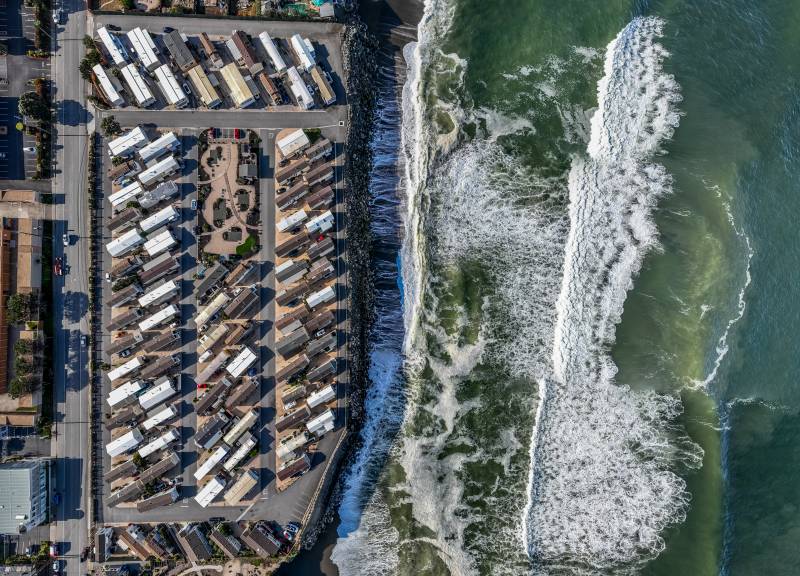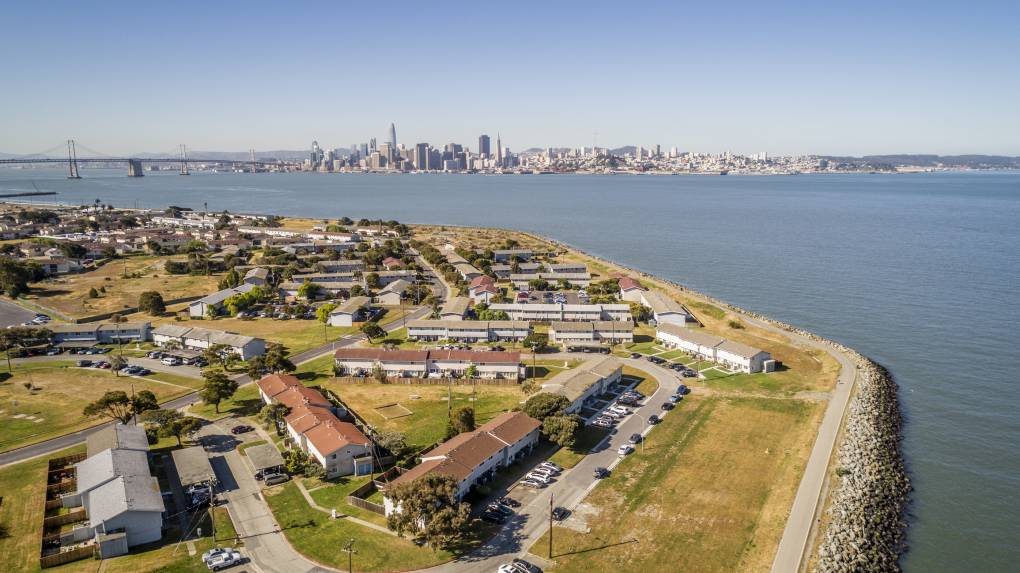While the bill is an excellent starting point for sea-level rise planning, John Gioia, a supervisor from Contra Costa County, said the law should have come with more of a stick for local governments that don’t comply.
“A bill like this gets the ball rolling,” he said. “We’ll soon realize it’s not fast enough.”
He holds fast to his perspective that the region needs a stronger, central authority on sea-level rise to match the dire consequences of not adequately preparing for rising seas. Currently, the Bay Area is governed by a patchwork quilt of local and state authorities.
“Direct authority gets things done faster and more effectively than voluntary action,” he said. “Given the urgency of this issue in the Bay Area and the speed of development, we need to act now.”
Len Materman, CEO of OneShoreline, San Mateo County’s flood and sea-level rise resiliency district, applauds the bill’s passing but wishes the law went further to include specific requirements for places like airports, hospitals and harbors.
“No local government can address this or most other climate threats, so resilience activities should align protection across multiple jurisdictions,” he said.
The state expects local governments to cooperate. Coastal regulators with the California Coastal Commission and the Bay Conservation Development Commission, or BCDC, have the power to approve or deny plans for adaptation projects and development along the shoreline.
“Sea level is already rising on our shorelines and more is already ‘baked in,’” said Zachary Wasserman, chair of BCDC, in a letter of support for the bill. “The only questions are how fast the oceans will rise and whether or not California will be prepared.”
The agency is creating a regional sea-level rise plan, with a first draft supposedly available by the end of 2024. Larry Goldzband, executive director of BCDC, said the plan is vital because it will cost at least $110 billion for the Bay Area to adapt to mid-century flooding caused by rising sea levels. But if leaders fail to act, the price could be much higher at around $230 billion.
Local governments have until January 2034 to develop sea-level rise plans.
“Everybody now sees that deadline ten years from now and recognizes that this is real,” Goldzband said. “There’s going to be huge amounts of social and economic dislocation due to flooding if we don’t adapt.”
His team plans to follow up with all local governments around the region to ensure they are on board so the Bay Area of tomorrow isn’t overwhelmed by water. The agency is holding community and government meetings across the area to get input on the plan, said Dana Brechwald, assistant planning director for climate adaptation with BCDC.
The new law comes at a perfect time, she said, as the state’s updated sea-level rise standards could come out in the next few months.
“This is a trifecta of initiatives we’ve never seen before,” she said. “I think it’s going to accelerate action throughout the state. We’re excited. This is what we live for.”

